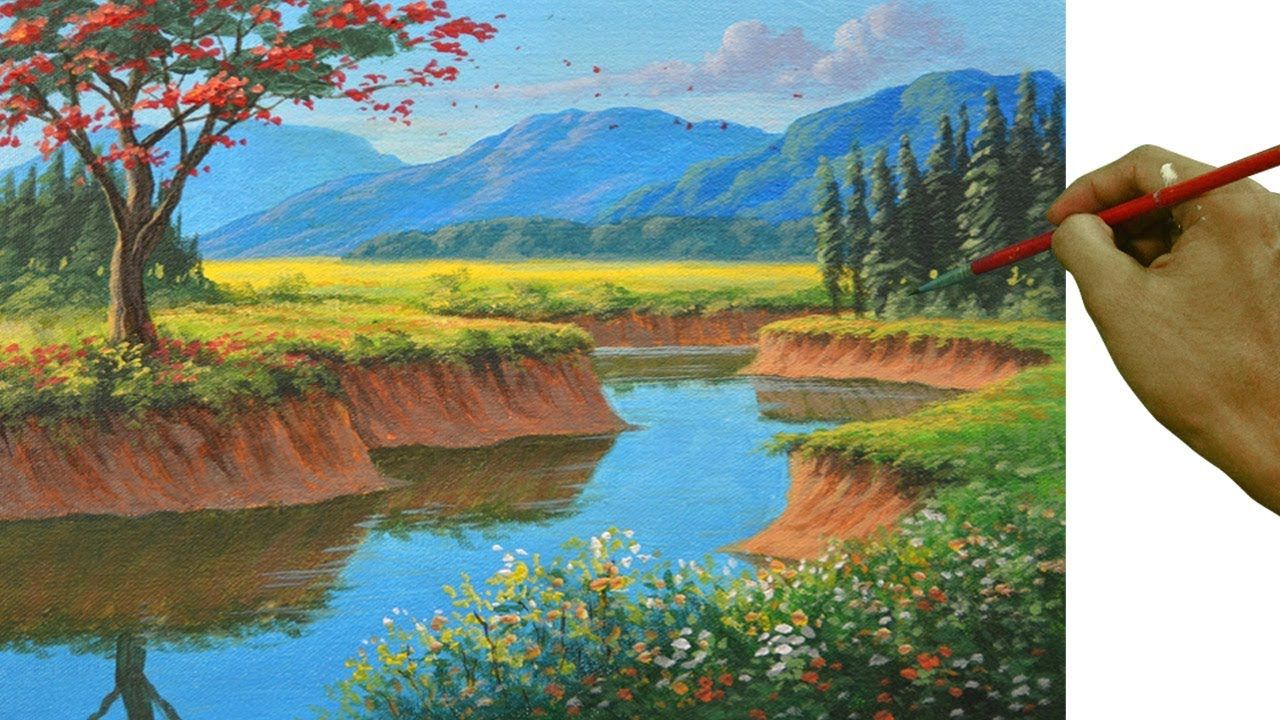Ever stared into the piercing gaze of an owl and wondered how to capture that enigmatic essence on canvas? Painting a realistic owl in acrylics can seem daunting, akin to deciphering an ancient, avian cipher. However, with a structured approach and a bit of artistic finesse, even a novice can render a magnificent feathered portrait. Let’s embark on this creative peregrination, shall we?
I. The Foundation: Preparation and Priming
A. Material Procurement: The odyssey begins with gathering your arsenal. You’ll require a stretched canvas (12×16 inches is a respectable starting point), a selection of acrylic paints (burnt umber, titanium white, yellow ochre, raw sienna, and black are indispensable), an assortment of brushes (round, flat, and filbert shapes in varying sizes), a palette for mixing, a water container for rinsing, paper towels, and a graphite pencil for sketching. Consider a stay-wet palette to mitigate the rapid desiccation inherent to acrylics.
B. Surface Preparation: Ensure your canvas is appropriately primed. If not pre-primed, apply two thin coats of gesso, allowing each coat to desiccate thoroughly before proceeding. This creates an ideal surface for paint adhesion and vibrancy.
C. Reference Imagery: Select a high-resolution reference photograph of your chosen owl species. Pay meticulous attention to the nuances of its plumage, the interplay of light and shadow, and the unique characteristics that define its physiognomy.
II. The Blueprint: Sketching the Avian Form
A. Proportionate Delineation: With your graphite pencil, lightly sketch the basic outline of the owl onto the canvas. Focus on establishing accurate proportions and ensuring the overall composition is pleasing. Consider the “rule of thirds” to create a visually compelling arrangement.
B. Anatomical Nuances: Refine the sketch, paying close attention to the anatomical structure of the owl. Observe the curvature of its beak, the placement of its eyes (a keystone element in capturing its character), and the subtle contours of its facial disc.
C. Plumage Mapping: Lightly indicate the major patterns of the owl’s plumage. This doesn’t necessitate rendering every individual feather, but rather establishing the broad areas of light and dark that define its texture.
III. The Underpainting: Establishing Tonal Values
A. Burnt Umber Wash: Mix a diluted wash of burnt umber with water (approximately a 1:3 ratio). Apply this wash evenly across the entire canvas, creating a monochromatic underpainting. This serves as a tonal foundation for subsequent layers.
B. Value Modulation: Using a dry brush technique, selectively remove some of the burnt umber wash with a paper towel to create areas of lighter value. This establishes the initial highlights and shadows, lending depth and dimension to the composition.
C. Refining the Foundation: Allow the underpainting to dry completely. Once dry, selectively glaze areas with additional layers of diluted burnt umber to deepen shadows and enhance contrast. This stage is crucial for establishing a strong tonal foundation.
IV. The Chromatic Symphony: Layering Colors and Textures
A. Base Layer Application: Begin applying the base colors of the owl’s plumage. Mix your colors carefully, striving to match the hues observed in your reference photograph. Use a flat brush to apply these colors in broad, even strokes.
B. Feather Impasto: To create the illusion of individual feathers, employ a dry brush impasto technique. Load a small amount of paint onto a stiff brush and lightly drag it across the canvas, leaving behind textured strokes that mimic the appearance of feathers. Vary the direction and length of these strokes to add realism.
C. Highlighting and Shading: Gradually build up the highlights and shadows in the plumage. Use titanium white and yellow ochre to create lighter tones, and burnt umber and black to deepen shadows. Blend these colors seamlessly to create a smooth transition between light and dark.
D. Eye Enigmas: The eyes are the windows to the soul, and in the case of an owl, they demand particular attention. Carefully render the iris, pupil, and surrounding feathers, paying close attention to the interplay of light and shadow. Use a fine-tipped brush to add subtle highlights and reflections, bringing the eyes to life.
V. The Finessing: Details and Refinements
A. Beak Detailing: Meticulously render the beak, paying attention to its texture, shape, and color variations. Use a fine-tipped brush to add subtle highlights and shadows, creating a sense of realism.
B. Plumage Complexity: Add intricate details to the plumage, such as individual feather barbs and subtle color variations. Use a fine-tipped brush to create these details, working slowly and deliberately.
C. Background Integration: Consider adding a subtle background to complement the owl. A blurred, muted background can help to accentuate the subject and create a sense of depth. Avoid overly detailed backgrounds that may detract from the focal point.
D. Final Glazing: Apply a final glaze of thinned acrylic medium to unify the painting and enhance its luminosity. This also helps to protect the paint surface from dust and damage.
VI. The Adjudication: Evaluation and Adjustments
A. Critical Assessment: Step back from your painting and critically assess your work. Identify areas that require further refinement and make necessary adjustments.
B. Iterative Refinement: Continue to refine the painting until you are satisfied with the overall result. This may involve adding additional layers of paint, adjusting colors, or refining details.
C. Signature and Presentation: Once you are completely satisfied with your painting, sign your name discreetly in a corner. Allow the painting to dry completely before varnishing and framing.
Painting a realistic owl in acrylics is a journey of observation, patience, and artistic exploration. Embrace the challenge, hone your skills, and revel in the creation of your own avian masterpiece. You may find you enjoy painting more than you thought!
